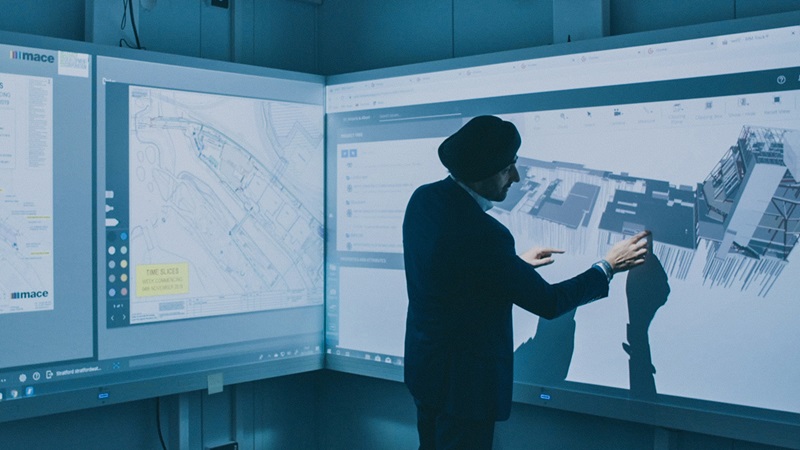Digital control centres: the future of construction
With technology accelerating project delivery and digital data available at every step in the construction process, the built environment is transforming itself in the modern world. However, with construction information often siloed, incomparable and scattered across global projects, there is often very little real opportunity to scrutinise what it is telling us, posing a real problem across the industry.
Picture a typical construction project: there could be over 100 procured packages of work, each collecting and reporting data - feeding safety information into one system, documenting delivery times on another, and recording material deliveries elsewhere. All this information is useful to a project. But it’s similar data, sitting in different places. This not only results in duplicated effort but also makes it impossible for senior leaders to see the big picture, spot blockers and make fast, impactful decisions.
While solutions exist, due to the complexities of construction projects, they are evolving too slowly. To speed up progress, Mace comprehensively studied a technical solution and best practice behaviours and has transformed project delivery. The global consultancy and construction firm, along with a consortium of private sector SMEs including Evifile, Mission Room and 3D Repo, and academic institutions Imperial College London and UCL, secured funding from Innovate UK to explore and develop ‘The AEC Production Control Room’.
Command centres have, of course, existed in several forms over the last decade, projects across the industry would typically purchase hardware from external vendors. This simply gave the same data and information in a larger format for collaborative discussions. This trial not only developed ‘plug and play’ control rooms, but also the data architecture behind it. They enable key software tools to talk to each other, making it possible to ‘cross-pollinate’ data from different sources for smarter insights and metrics.
By its very nature, it encourages confident collaboration in the digital space by removing silos and bringing stakeholders together. And with much of the data produced able to be contextualised in 3D models, we’ve not only made great strides on best practice but are now able to replicate the method, scaling up as necessary.
In many ways, it’s a simple solution – except that bringing multiple datasets from multiple systems and channels together is harder than it looks. Using a standardised data model, automated software integrations and a centralised data cloud, the control room puts live progress reports directly into the hands of subcontractors, managers and leaders, facilitating faster and better-informed decision making at all levels.
It’s completely transformed how we work, providing key benefits in real-time on several Mace projects, including skyscraper office developments and infrastructure projects. A ‘master Control Room’ has also been established at Mace head office in Central London.
The digital command centre is revolutionary in its capability to deliver both faster and safer, with higher-quality information streams and lower carbon emissions. It truly unlocks the potential in every project, for the betterment of future projects.
We’ve learnt a huge amount along the way - from discovering the best way to set up a project from day one, to how unexpected challenges like global pandemics can be managed to reduce the risks to the programme and, importantly, to people on site.
By bringing together data that every project has at its fingertips, the possibilities are endless - and for that very reason, we’re still just scratching the surface of this data innovation.
This article was originally published via PBC Today.











